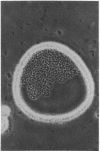Abstract
By modification of the enrichment culture procedure three bacterial strains capable of degrading crude oil in sea water were isolated in pure culture, UP-2, UP-3, and UP-4. Strain UP-2 appears to be highly specialized for growth on crude oil in sea water since it showed strong preference for oil or oil degradation products as substrates for growth, converted 66% of the oil into a form no longer extractable by organic solvents, quantitatively degraded the paraffinic fraction (gas chromatographic analysis), emulsified the oil during exponential growth, and produced 1.6 × 108 cells per mg of oil. After exhaustive growth of UP-2 on crude oil the residual oil supported the growth of UP-3 and UP-4, but not a previously isolated oil-degrading bacterium, RAG-1. Strains UP-2, UP-3, and UP-4 grew on RAG-1-degraded oil (specifically depleted of n-alkanes). The growth of UP-3 and UP-4 on UP-2 and RAG-1-degraded oil resulted in the production of new paraffinic compounds as revealed by gas chromatography. When the four strains were grown either together in a mixed culture or sequentially, there was over 75% oil conversion. By plating on selective media, growth of the individual strains was measured kinetically in the reconstituted mixed culture, revealing competition for common growth substances (UP-2 and RAG-1), enhanced die-off (UP-2), and stabilization (UP-4) during the stationary phase.
Full text
PDF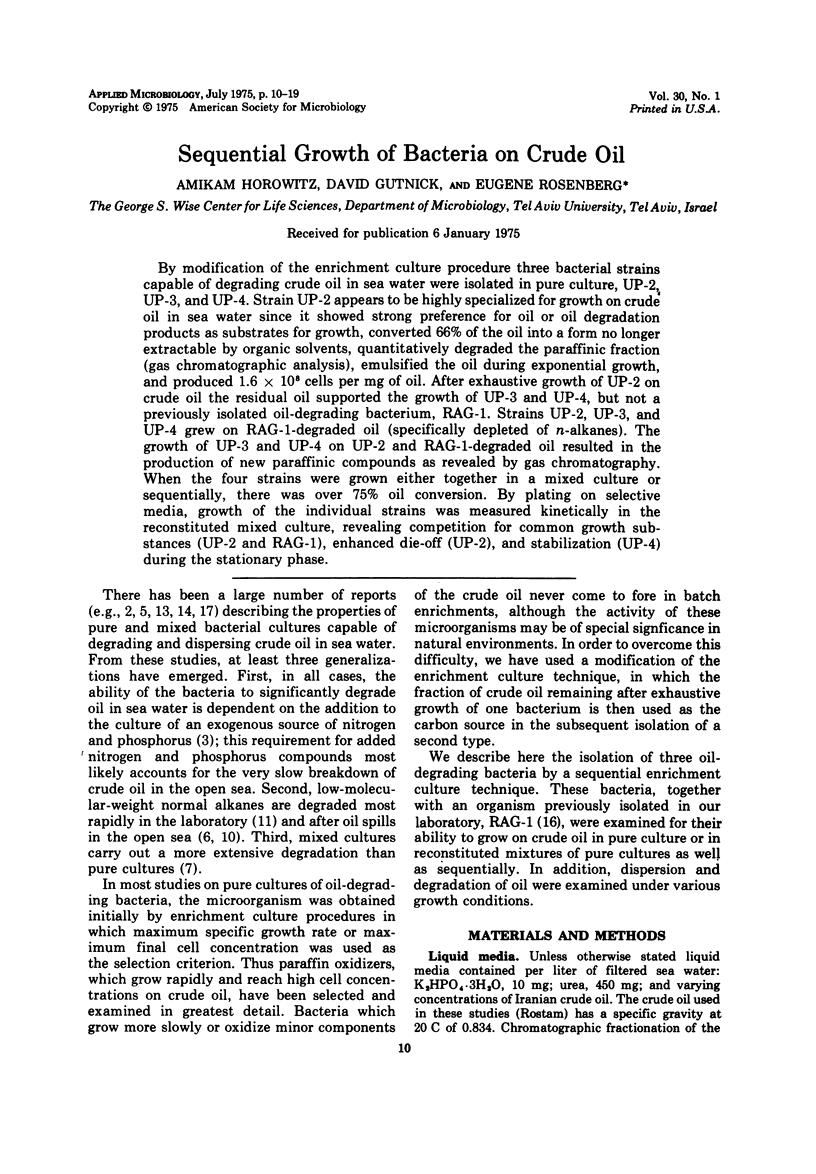
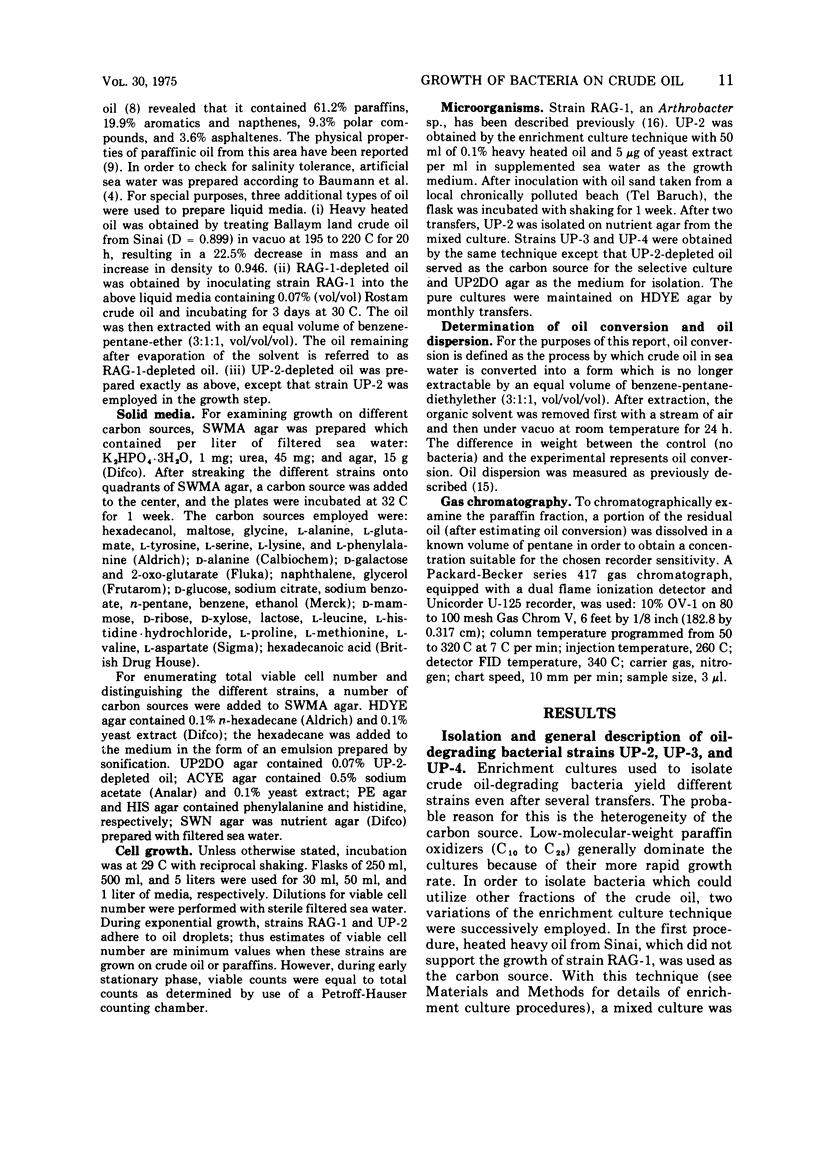
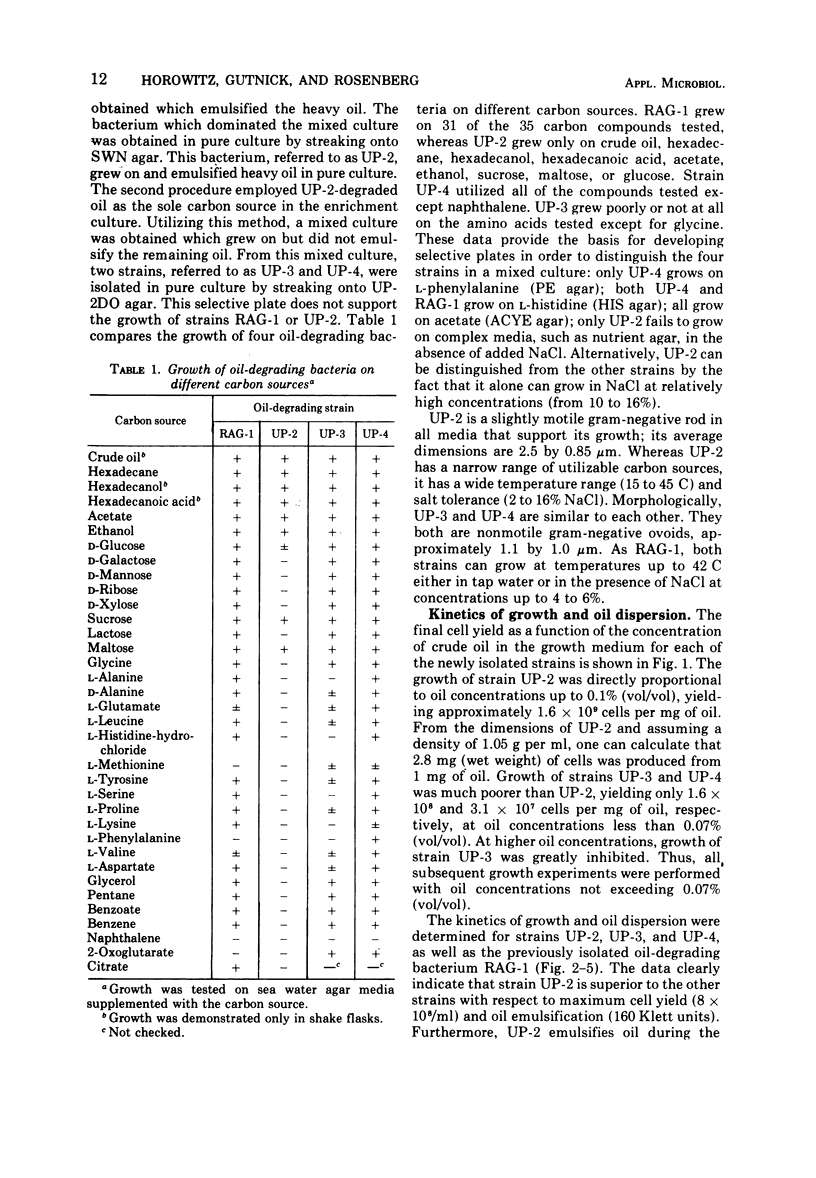
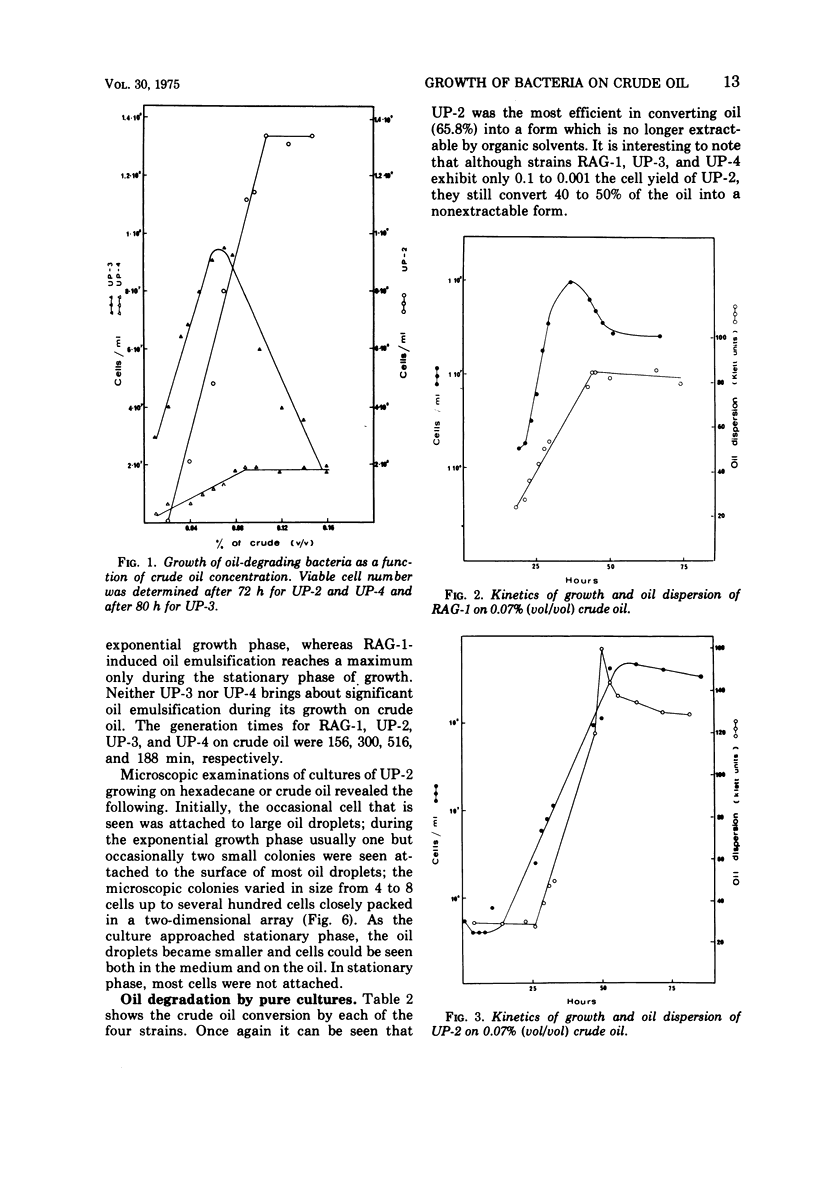
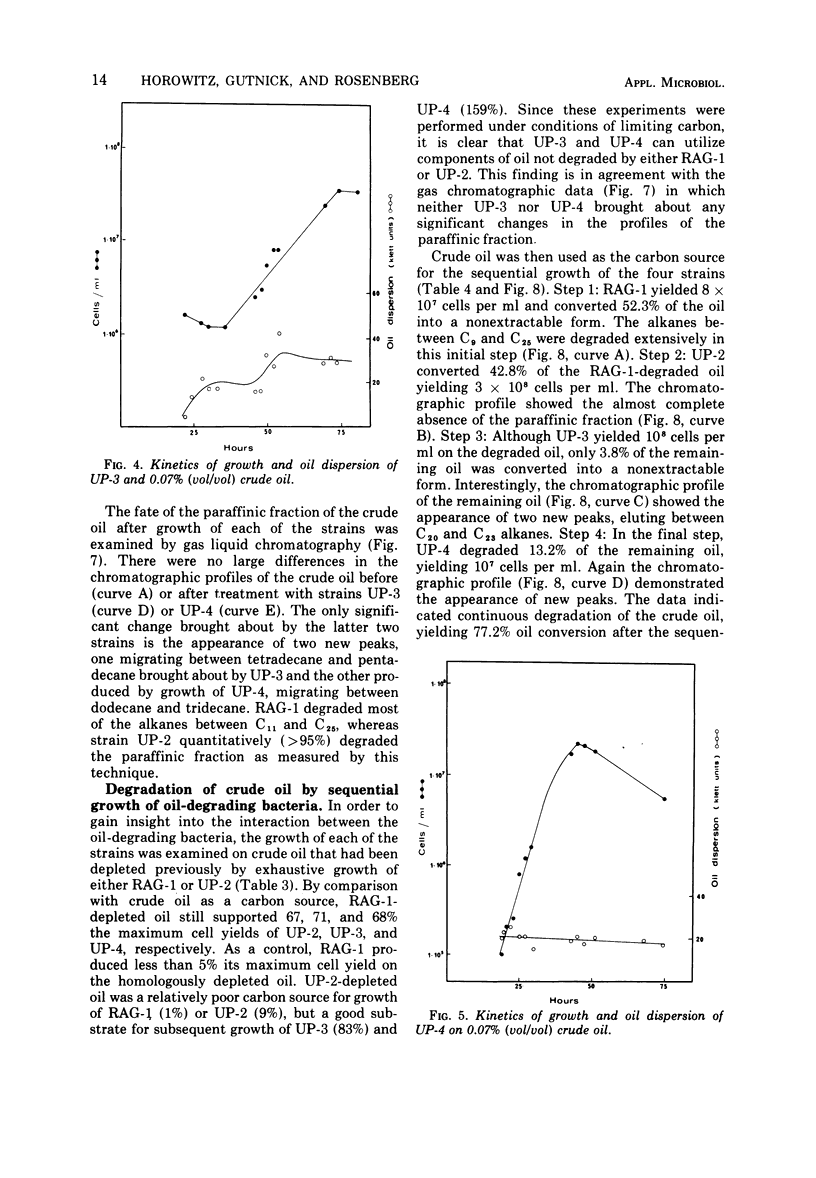
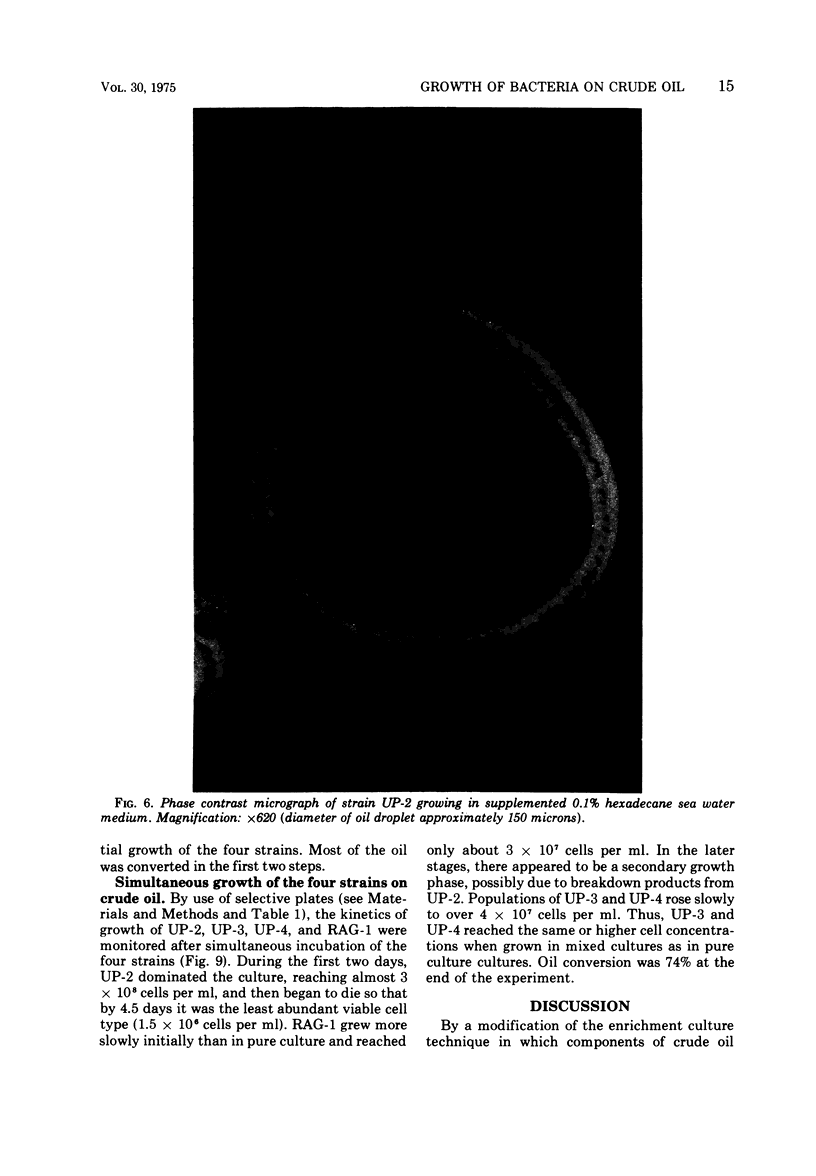
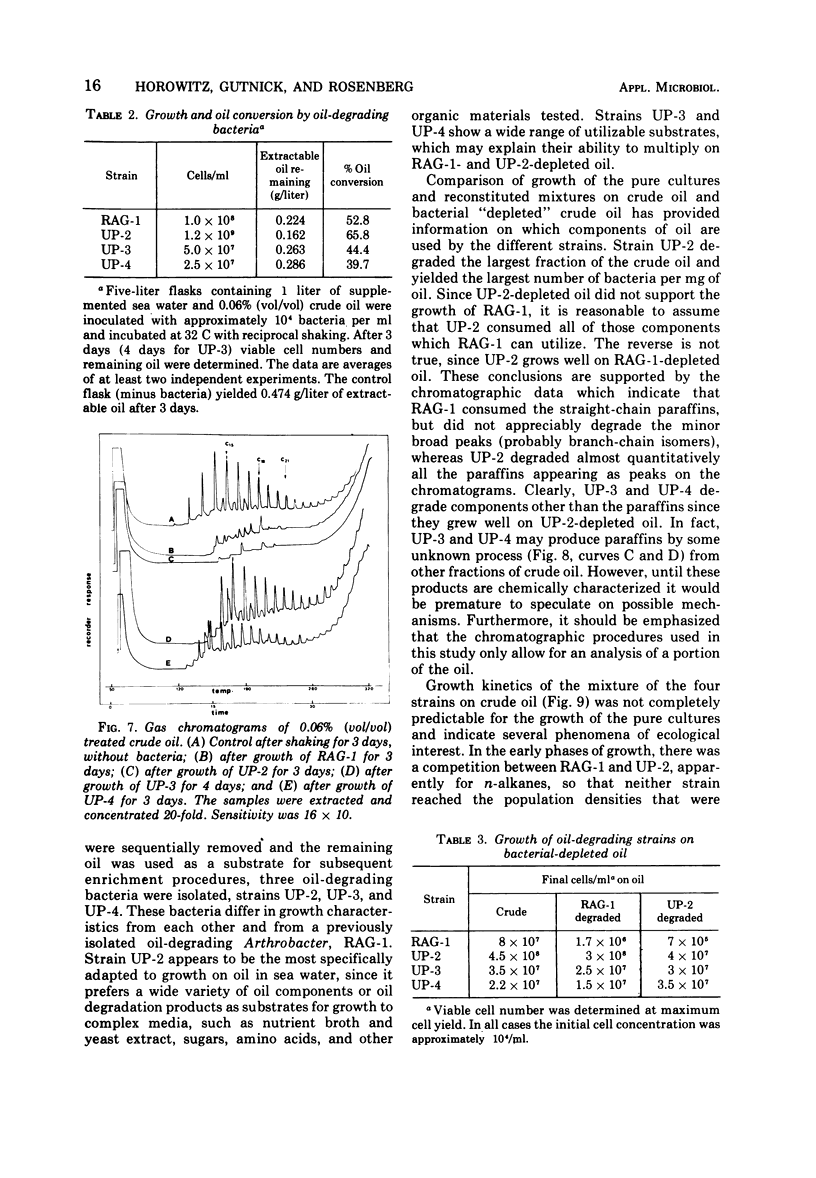
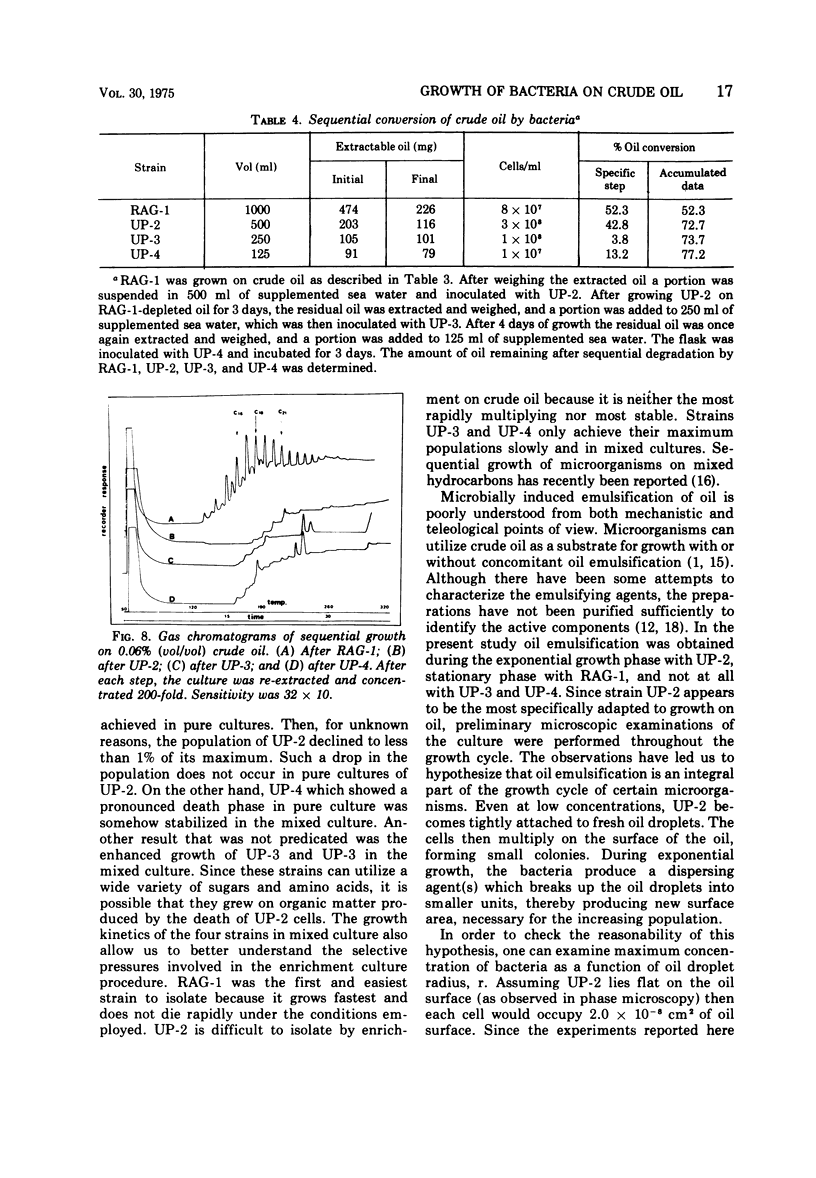
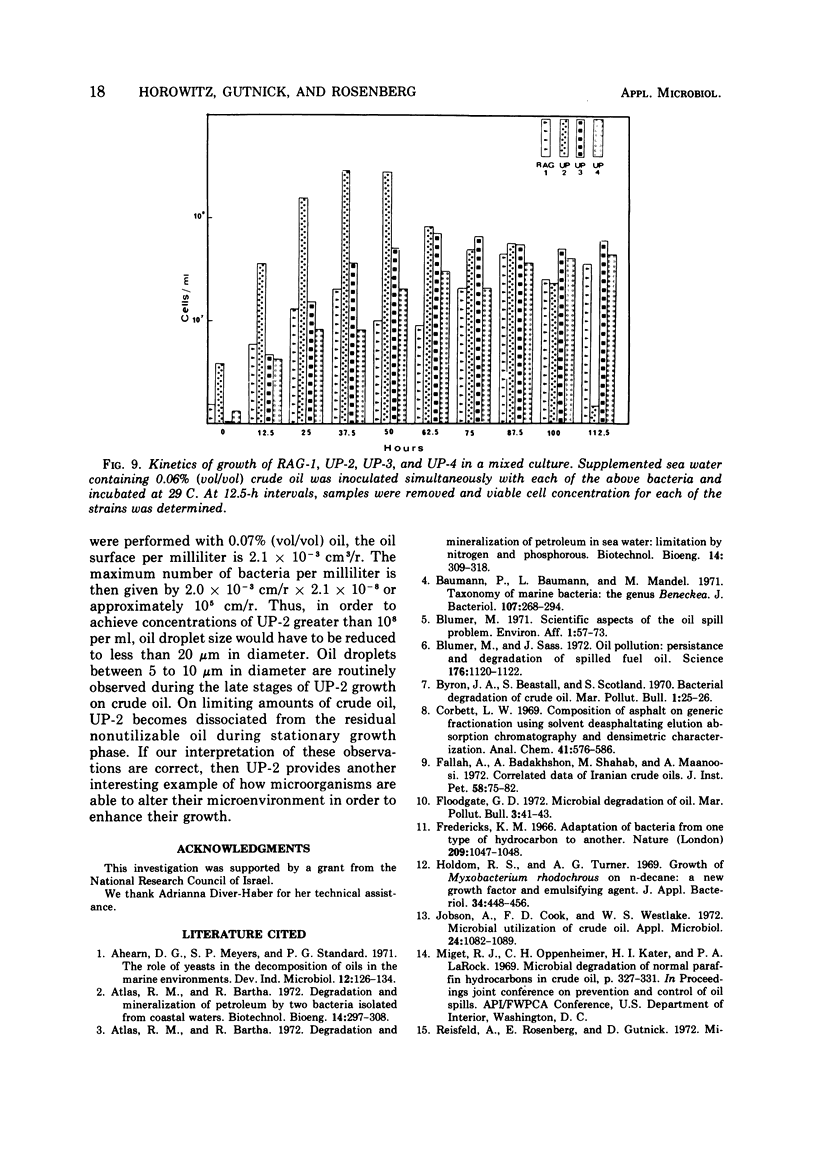
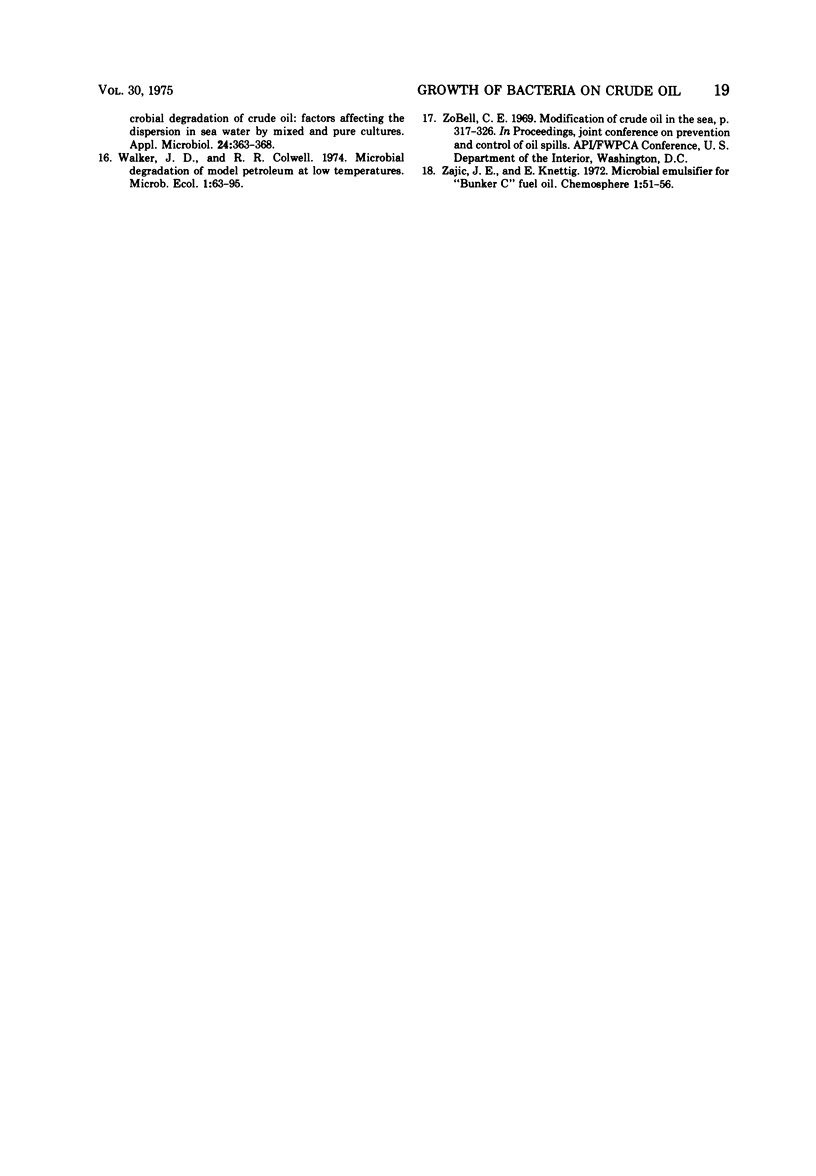
Images in this article
Selected References
These references are in PubMed. This may not be the complete list of references from this article.
- Atlas R. M., Bartha R. Degradation and mineralization of petroleum by two bacteria isolated from coastal waters. Biotechnol Bioeng. 1972 May;14(3):297–308. doi: 10.1002/bit.260140303. [DOI] [PubMed] [Google Scholar]
- Atlas R. M., Bartha R. Degradation and mineralization of petroleum in sea water: limitation by nitrogen and phosphorous. Biotechnol Bioeng. 1972 May;14(3):309–318. doi: 10.1002/bit.260140304. [DOI] [PubMed] [Google Scholar]
- Baumann P., Baumann L., Mandel M. Taxonomy of marine bacteria: the genus Beneckea. J Bacteriol. 1971 Jul;107(1):268–294. doi: 10.1128/jb.107.1.268-294.1971. [DOI] [PMC free article] [PubMed] [Google Scholar]
- Blumer M., Sass J. Oil pollution: persistence and degradation of spilled fuel oil. Science. 1972 Jun 9;176(4039):1120–1122. doi: 10.1126/science.176.4039.1120. [DOI] [PubMed] [Google Scholar]
- Fredricks K. M. Adaptation of bacteria from one type of hydrocarbon to another. Nature. 1966 Mar 5;209(5027):1047–1048. doi: 10.1038/2091047a0. [DOI] [PubMed] [Google Scholar]
- Jobson A., Cook F. D., Westlake D. W. Microbial utilization of crude oil. Appl Microbiol. 1972 Jun;23(6):1082–1089. doi: 10.1128/am.23.6.1082-1089.1972. [DOI] [PMC free article] [PubMed] [Google Scholar]
- Reisfeld A., Rosenberg E., Gutnick D. Microbial degradation of crude oil: factors affecting the dispersion in sea water by mixed and pure cultures. Appl Microbiol. 1972 Sep;24(3):363–368. doi: 10.1128/am.24.3.363-368.1972. [DOI] [PMC free article] [PubMed] [Google Scholar]



